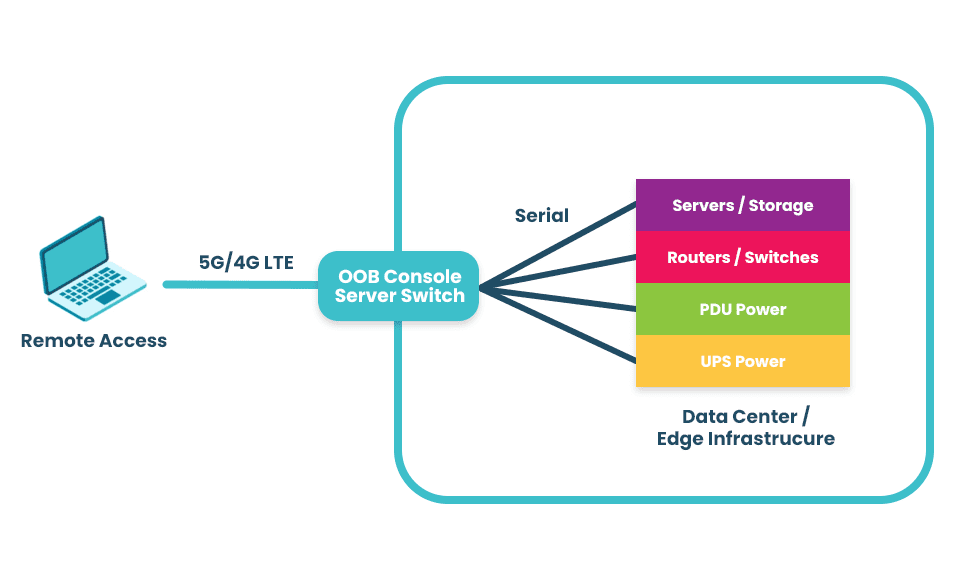Console Server Switch: How to Scale Critical Remote Infrastructure
What is a console server switch, and how does it work?
A console server switch (also referred to as a serial console, console server, serial console router, or serial switch) directly connects to other devices via their management ports (e.g., serial, Ethernet, or USB). Traditionally, it sits at the top of the rack in data center deployments and provides administrators with a single interface from which to manage and control all the devices below it. Now, many teams also use console server switches to manage device deployments in branches and edge sites, such as operational technology (OT) in manufacturing plants and Internet of Things (IoT) sensors in oil and gas refineries. Some more advanced console server switches also provide network routing and switching capabilities, enabling them to create a dedicated control plane that doesn’t rely on production network infrastructure, which is referred to as an out-of-band (OOB) network. Using an OOB network to manage critical infrastructure is known as out-of-band (OOB) management, and it provides administrators with continuous remote access to monitor, manage, troubleshoot, and recover even when the main network is offline.

What problems does a console server switch solve?
Console server switches address numerous issues relating to resilience and efficiency, especially as organizations scale in size and geographic distribution. These include:
| Challenges involved in scaling critical remote infrastructure | |
| The complexity of large-scale enterprise networks increases the risk of human error in a networking or security configuration causing downtime. | Infrastructure is deployed in remote and sometimes inaccessible locations where it’s difficult to monitor and control environmental conditions. |
| During network outages, teams lose access to remote infrastructure and can’t troubleshoot or recover systems without costly, time-consuming travel. | Recovery times from ransomware and other cyberattacks are lengthened when backup data and rebuilt systems get reinfected on the production network. |
Reducing network complexity to mitigate the risk of human error
Providing a virtual presence in remote and inaccessible deployment sites
In today’s globalized economy, scaling often involves deploying devices around the world in remote sites like branch offices, manufacturing facilities, and shipping centers. Very often, a centralized infrastructure team remotely monitors and manages the equipment at these sites, so organizations don’t have to hire technical staff to be present at each location. Additionally, some industries use IoT and OT (operational technology) to perform dangerous work or collect critical data in hazardous environments underground, underwater, or even in space. In these situations, it’s very challenging to maintain the temperature, humidity, and other physical conditions necessary to ensure the optimal performance and lifespan of expensive equipment and prevent downtime. A console server switch gives remote infrastructure teams a centralized dashboard to track the health of critical equipment and configure automatic alerts, so they’ll be notified of potential issues. In addition, many newer options also work with environmental sensors that monitor temperature, humidity, airflow, and other important conditions. Environmental monitoring warns remote teams about potential problems, such as overheating, so they can respond before equipment failures occur. A console server switch provides a virtual presence in remote deployment sites so organizations can scale their infrastructure safely and cost-effectively.
Giving teams a lifeline to access and recover remote infrastructure during outages
It’s typical for companies to use the same centralized IT team to manage their network architecture even as they scale with additional data center infrastructure and remote sites. These teams rely on an Internet or WAN (wide area network) connection to access and control remote infrastructure. If the ISP, WAN, or local network goes down due to an equipment failure, misconfiguration, or cyberattack, administrators are completely cut off and can’t even begin troubleshooting until they travel on-site or hire a local consultant to help. This increases both the duration and the expense of downtime, leading to greater revenue losses and reputational damage. A console server switch uses out-of-band (OOB) management to provide an alternative path to remote infrastructure that doesn’t rely on any production services. Many solutions also use 5G/4G cellular network interfaces to ensure continuous availability even if there’s a regional ISP outage. OOB allows teams to troubleshoot and repair issues quickly and remotely, saving time and money while ensuring network resilience.
Isolating management infrastructure and providing a safe recovery environment
Directly managing network infrastructure on the production network is a security risk because it makes it easy for attackers who breach the network to gain complete control over the entire architecture. The best practice, according to a recent CISA directive, is to isolate management interfaces on a dedicated network that’s inaccessible from production, which is known as isolated management infrastructure (IMI). In addition, having an isolated network environment makes it easier to recover from ransomware because teams can safely restore backup data and rebuild systems in an isolated recovery environment (IRE) without the risk of reinfection. However, deploying parallel network infrastructure is costly and time-consuming, especially as organizations scale and add dozens or even hundreds of additional business sites. A console server switch moves all management interfaces to a dedicated network that’s completely separate from production without requiring any additional networking equipment like routers or switches. During ransomware attacks and other security breaches, infrastructure teams can use this out-of-band network to recover data, provision replacement systems, and test for reinfection. A console server switch reduces the attack surface while significantly accelerating ransomware recovery, allowing organizations to scale without sacrificing resilience.
What to look for in the best console server switch
All console server switches offer consolidated, out-of-band management so teams can remotely access multiple devices. For ultimate resilience and scalability, additional features to look for include:
- Enough management ports, and a mix of console and network ports, to connect all devices in a deployment site, and flexible product offerings so you don’t have to pay for extra ports you don’t need.
- High-speed network interface options like 5G cellular, fiber, and Wi-Fi to ensure maximum performance and productivity.
- The ability to interface with legacy and mixed-vendor devices to ensure complete management coverage without expensive adaptors or complicated configuration tweaks.
- Support for your choice of custom and third-party automation to streamline operations and further reduce the risk of human error.
- Vendor-neutral software capable of running VMs and containers so you can host third-party automation, security, AIOps, and more without deploying additional hardware.
- Intuitive management software that easily integrates with third-party apps for fleet management, monitoring, automation, and more.
- Seamless VPN functionality or a secure SaaS-based management portal to ensure secure remote access.
Most console server switches are second-generation (or Gen 2) solutions that provide high-speed OOB management and some automation capabilities. However, that generation is limited by closed software architectures that prevent teams from utilizing third-party automation tools or consolidating their network functions.
Third-generation, or Gen 3, solutions use x86, Linux-based software architectures capable of running custom and third-party applications. This makes Gen 3 console server switches the best choice for enabling limitless scalability, automation, and efficiency.
Why choose the Nodegrid console server switch
The Nodegrid solution from ZPE Systems is the only Gen 3 console server switch, meaning it’s the only completely vendor-neutral platform for remote out-of-band management. Nodegrid offers up to 96 managed serial ports on a 1U rack-mounted device to support large deployments such as hyperscale data centers. Other product offerings include modular, integrated services routers you can customize to fit your deployment needs, as well as versatile, all-in-one branch gateway routers that consolidate networking in a single device to reduce complexity and costs. All Nodegrid devices run the x86, Linux-based NodegridOS which is capable of hosting VMs and Docker containers for third-party applications. With Nodegrid, teams can utilize the best tools for automation, security, AIOps, edge compute, and more without vendor restrictions. The Nodegrid console server switch reduces complexity and enables limitless scaling, productivity, and innovation.
